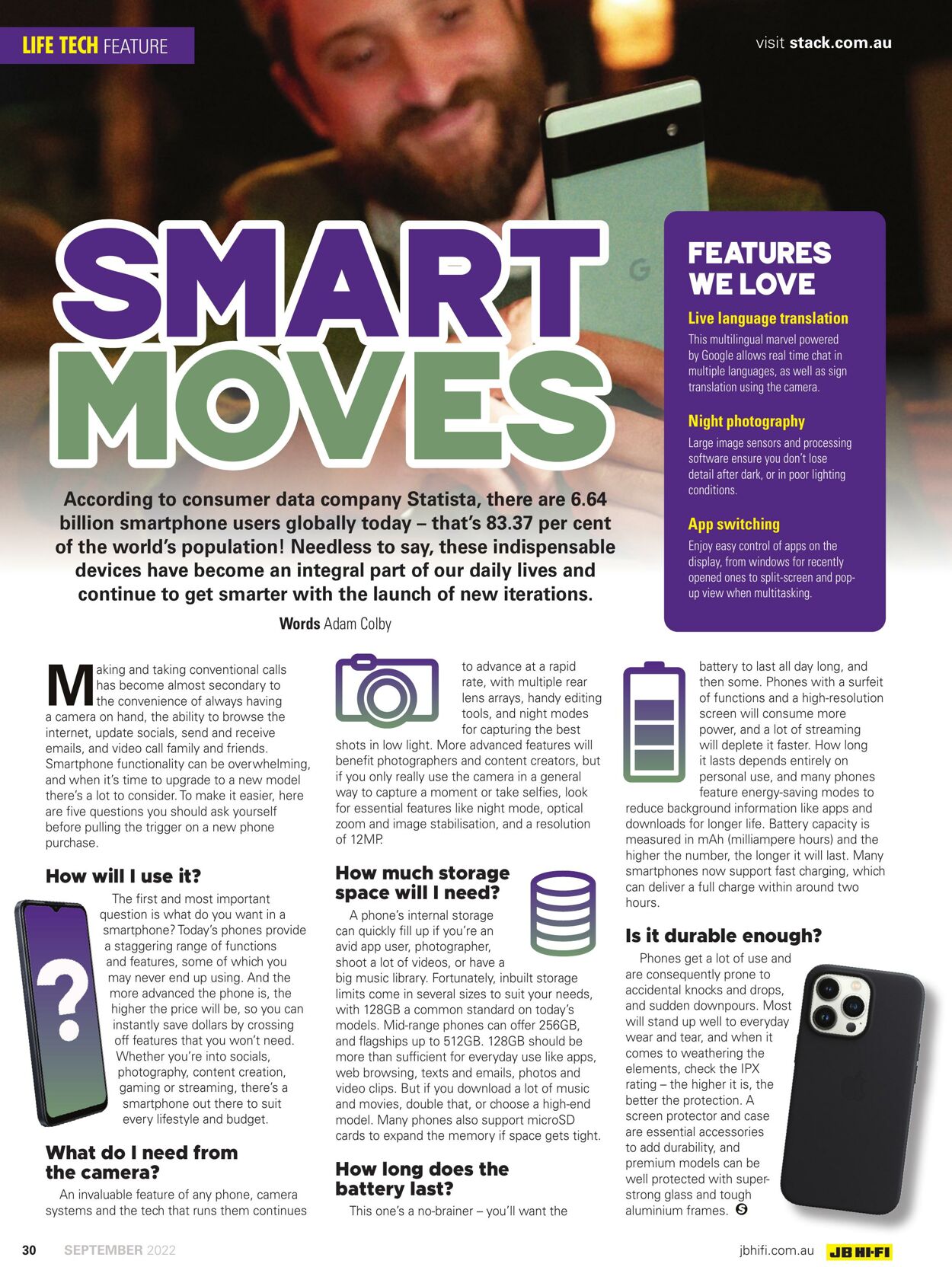













Products in this catalogue
We ce ered | Td Tees a aS WE LOVE ive language translation STN eRe Sue a MeN) Te translation using the camera Night photography Large image sensors and proces oft ensure you don’t lost Pee RC aoa a eC mente According to consumer data company Statista, there are 6.64 billion smartphone users globally today - that’s 83.37 per cent of the world’s population! Needless to say, these indispensable App switching Enjoy easy control of apps on the devices have become an integral part of our daily lives and continue to get smarter with the launch of new iterations. Words Adam Colby aking and taking conventional calls M has become almost secondary to the convenience of always having a camera on hand, the ability to browse the internet, update socials, send and receive emails, and video call family and friends. Smartphone functionality can be overwhelming, and when it's time to upgrade to a new model there's a lot to consider. To make it easier, here are five questions you should ask yourself before pulling the trigger on a new phone purchase How will | use The first and most important question is what do you want in a smartphone? Today's phones provide a staggering range of functions and features, some of which you may never end up using. And the more advanced the phone is, the higher the price will be, so you can instantly save dollars by crossing off features that you won't need. Whether you're into socials, photography, content creation, gaming or streaming, there's a smartphone out there to suit every lifestyle and budget What do I need from the camera? An invaluable feature of any phone, camera systems and the tech that runs them continues =, ——_. to advance at a rapid rate, with multiple rear O lens arrays, handy editing tools, and night modes for capturing the best shots in low light. More advanced features will benefit photographers and content creators, but if you only really use the camera in a general way to capture a moment or take selfies, look for essential features like night mode, optical zoom and image stabilisation, and a resolution of 12MP How much storage space will | need? A phone's internal storage can quickly fill up if you're an avid app user, photographer, shoot a lot of videos, or have a big music library. Fortunately, inbuilt storage limits come in several sizes to suit your needs, with 128GB a common standard on today’s models. Mid-range phones can offer 256GB, and flagships up to 512GB. 128GB should be more than sufficient for everyday use like apps, web browsing, texts and emails, photos and video clips. But if you download a lot of music and movies, double that, or choose a high-end model. Many phones also support microSD cards to expand the memory if space gets tight. How long does the battery last? This one’s a no-brainer — you'll want the battery to last all day long, and then some. Phones with a surfeit of functions and a high-resolution screen will consume more power, anda lot of streaming will deplete it faster. How long it lasts depends entirely on personal use, and many phones feature energy-saving modes to reduce background information like apps and downloads for longer life. Battery capacity is measured in mAh (milliampere hours) and the higher the number, the longer it will last. Many smartphones now support fast charging, which can deliver a full charge within around two hours. Is it durable enough? Phones get a lot of use and are consequently prone to accidental knocks and drops, and sudden downpours. Most will stand up well to everyday wear and tear, and when it comes to weathering the elements, check the IPX rating - the higher itis, the better the protection. A screen protector and case are essential accessories to add durability, and premium models can be well protected with super strong glass and tough aluminium frames. jbhifi.com.au JBHEFI
| Name | Details |
|---|